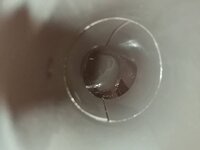- :
- Plano, Texas, USA
The oil consumption isn’t that bad. My 2.5L NA uses about 0.3 ~ 0.7 quart of oil each time I change the oil (3,000 ~ 7,000-mile interval) with Mazda moly 0W-20.my cars lose too much oil to go 10K miles between oil changes.
If I were you, I may consider using 5W-30 oil which is recommended by Mazda worldwide trying to reduce the oil consumption a bit.

